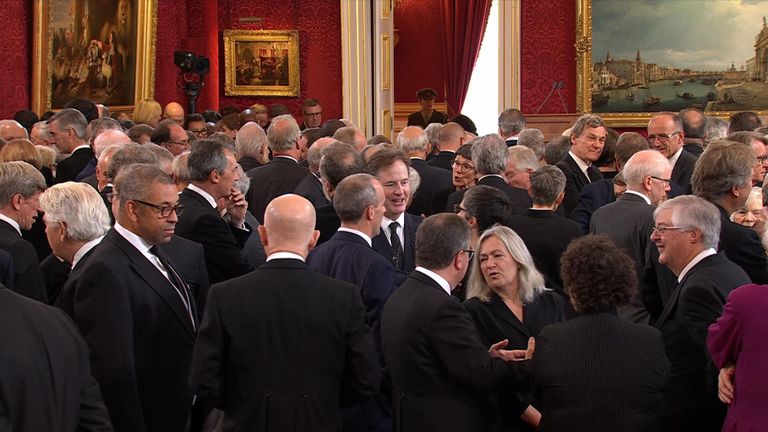Seven historic moments as Charles III is proclaimed King
King Charles III has been formally proclaimed monarch during an Accession Council ceremony which was televised for the first time.

King Charles III has been formally proclaimed monarch during an Accession Council ceremony which was televised for the first time.
While King Charles automatically became King on the death of his mother, the Accession Council, attended by Privy Councillors, confirmed his role this morning.
The monarch did not attend the ceremony at the State Apartments of St James’s Palace and only joined after he had been proclaimed monarch, at 10am, to hold his first Privy Council meeting.
Charles is proclaimed King – follow live updates
Here are the top seven historic moments from the Accession Council.
The Queen’s death is pronounced
The first part of the ceremony saw the Lord President of the Council, Leader of the House of Commons Penny Mordaunt MP, pronounce the death of the Queen in the picture gallery.
“It is my sad duty to inform you that her most gracious Majesty, Queen Elizabeth II, has passed away on Thursday 8 Septemnber 2022 at Balmoral Castle,” she said.
More than 200 privy councillors – consisting of senior politicians past and present, some members of the monarchy and other national figures – attended the ceremony.
King Charles III is proclaimed King
The Clerk of the Council read the Accession Proclamation declaring King Charles III the new monarch, Head of the Commonwealth and Defender of the Faith (head of the Church of England).
Declaring Charles III King, he said: “We now hereby with one voice, and consent of tongue and heart, publish and proclaim that Prince Charles Philip Arthur George by the death of the late sovereign of our happy become, be our only lawful and rightful liege, King Charles III, by the grace of God of the United Kingdom of Great Britain and Northern Ireland and his other realms and territories.”
The proclamation is signed
The proclamation was signed by the ‘platform party’ – Prince William, Queen Consort Camilla, Ms Mordaunt, Prime Minister Liz Truss, Lord Chancellor Brandon Lewis MP, the Lord Privy Seal, Earl Marshal, and the Archbishops of Canterbury and York.
The Privy Councillors then moved to the throne room, where the King joined them.
The King gives the Scottish Oath
The King made a personal declaration followed by the Scottish Oath, which dates back to a time when Catholic Europe was seen as an existential threat to Britain. It promises to protect the security of the Church of Scotland which, unlike in England, is separate from the state.
He was watched by six former prime ministers.
He vows to uphold the constitutional government
King Charles gave his personal declaration, vowing to follow his mother’s “inspiring example”.
“I am deeply aware of this great inheritance and of the duties and heavy responsibilities of sovereignty which have now passed to me,” he said.
Speaking of his personal grief, he said: “I know how deeply you and the entire nation, and I think I may say the whole world, sympathise with me in this irreparable loss we have all suffered.”
The proclamation is signed
The King then formally approved a series of orders, including one declaring the day of the Queen’s funeral a public holiday.
He then signed the proclamation, and trumpeters from the Life Guards and drummers from the Coldstream Guards played.
Charles III is officially proclaimed King
The proclamation was then read aloud on the balcony above Friary Court at St James’s Palace, officially proclaiming Charles III king.
It was read aloud again from the Royal Exchange in the City of London at midday.
